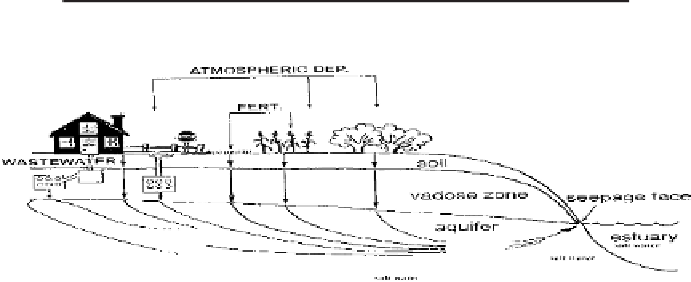Geoscience Reference
In-Depth Information
Table 1.
Point sources of pollution in a coastal watershed.
Type of pollution
Examples
Sewage disposal systems
Sewage lagoons, septic systems, cesspools,
barnyards/feed lots
Surface waste disposal sites
Landfills, garbage dumps, and surface waste dumps
Underground waste disposal sites
Storage tanks (low, medium, high level wastes)
Spills, washings, and intrusions
Oil, gas, waste spills: auto workshop washings,
Research laboratory washings, seawater or
saltwater intrusions
Mining sources
Acid mine drainage: mine waste dumps, and
seepages gas explosions
Natural mineral/ore deposits
Saline springs, hot spring waters, anhydrite,
pyrite deposits, etc.
Table 2.
Non-point sources of pollution in a coastal watershed.
Source
Examples
Agriculture
Cropland, irrigated land, woodland, and feed lots
Silviculture
Growing stock, logging, and road building
Construction
Urban development, and highway construction
Mining
Surface, and underground
Utility maintenance
Highways, streets, and deicing
Urban runoff
Floods and snowmelt
Fig. 1.
Different sources of pollutants in a coastal watershed.
dicult to subject the input/output source to precise mathematical anal-
ysis. Rather a measured and intelligent assumption of the affected area is
made for use in modelling and analysis. In heavily polluted areas, both point
sources and distributed sources may occur together or may be independent
of one another.















